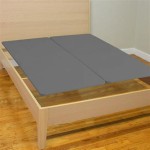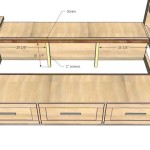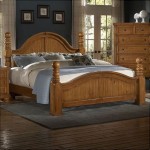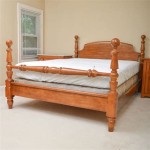Essential Aspects of Dimensions: King Size Bed Vs Queen
The dimensions of a bed play a crucial role in determining its comfort, space efficiency, and overall functionality. When it comes to size, the king and queen beds are two of the most popular choices. Understanding the essential aspects of these bed sizes can assist you in making an informed decision that suits your needs and preferences. This article delves into the critical distinctions between a king-size bed and a queen-size bed, outlining their dimensions, pros, cons, and suitability for different types of sleepers.
Dimensions and Space Requirements
The primary difference between a king and a queen bed lies in their dimensions. A standard king-size bed typically measures 76 inches wide (193 cm) and 80 inches long (203 cm). On the other hand, a queen-size bed measures 60 inches wide (152 cm) and 80 inches long (203 cm). The length of both sizes is the same, allowing for ample legroom for individuals of average height and above. However, the additional 16 inches of width in the king-size bed provide a noticeably more spacious sleeping surface.
Pros and Cons
King-Size Bed
Pros:
- Enhanced space: The generous dimensions of a king-size bed offer ample room to stretch out and move around comfortably, making it ideal for couples or individuals who prefer a spacious sleeping environment.
- Perfect for tall sleepers: The extra length accommodates individuals who are taller than average, preventing their feet from hanging off the edge of the bed.
Cons:
- Space concerns: King-size beds require a larger room to accommodate them comfortably, which may not be suitable for smaller bedrooms.
- Higher cost: King-size beds are generally more expensive than queen-size models due to their increased material requirements and larger dimensions.
Queen-Size Bed
Pros:
- Versatile and space-efficient: Queen-size beds offer a comfortable sleeping surface while still being suitable for smaller rooms, making them a versatile choice for various spaces.
- Affordable: Queen-size beds are typically more affordable than king-size beds, making them a budget-friendly option for many individuals.
Cons:
- Less spacious: While queen-size beds provide adequate space for most individuals, they may feel cramped for couples who prefer extra room to spread out.
- Not ideal for tall sleepers: The standard length of a queen-size bed may be insufficient for taller individuals, leading to discomfort if their feet extend beyond the edge.
Choosing the Right Size for Your Needs
The best bed size for you depends on your specific requirements and preferences. Consider the following factors when making a decision:
- Room size: Measure your bedroom to determine if a king-size bed can be comfortably accommodated without compromising space for other furnishings or movement.
- Number of occupants: If you share the bed with a partner or pet, a king-size bed may provide a more comfortable and spacious sleeping environment.
- Height: If you are tall, a king-size bed will offer the necessary length to prevent your feet from extending over the edge.
- Budget: Consider the financial implications when choosing a bed size, as king-size beds tend to be more expensive than queen-size options.
Ultimately, selecting the right size bed for you is a personal choice that involves balancing your comfort preferences, space constraints, and budget. Whether you opt for the spacious luxury of a king-size bed or the versatile comfort of a queen-size bed, choosing the right fit will enhance your sleep experience and create a restful retreat in your bedroom.

King Vs Queen Bed What S The Difference Amerisleep

The Difference Between A Queen And King Bed Bedinabox

King Vs Queen Bed Detailed Mattress Comparison Turmerry

King Vs Queen Bed Size Mattress What Is The Difference Nectar Sleep

King Bed Vs Queen B2c Furniture

Mattress Sizes Chart And Bed Dimensions Guide Amerisleep

Mattress Size Guide

Bed Dimensions A Guide To The Perfect In Solara Home

Bed Sizes The And Mattress Size Guide

King Size Bed Dimensions A Comparison Guide Nectar Sleep







